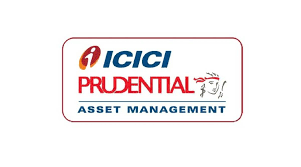
What is the difference between SIPs and mutual funds?
Today, finding the best investment option is not easy without the right knowledge. Markert is full of the latest trends and options, including SIPs and mutual funds. Mutual funds and systematic investment plans (SIPs) come to mind when you think about investing. All too often, people fail to understand the difference between these concepts and use them interchangeably. There is no connection between SIPs and Mutual Funds investment.
In this post, we’ll compare and contrast SIPs with mutual funds and look at their main distinctions. We will go over their features and how to pick one to help you reach your financial objectives.
What are Mutual Funds?
Mutual funds are a type of investment vehicle whose main purpose is to pool money from many different investors. They invest in a mix of assets, such as stocks and bonds. These are the ones who oversee the funds; professionals are in charge of these funds. They have specific goals, such as income, reducing risk, or achieving capital growth.
Categories of Mutual Funds
Equity Funds
High stocks are a type of fund. They invest in stocks for the long term. The goal is to profit from a promising stock. This creates a high expectation of loss. They are the ones that are the riskiest but can return the highest in the end.
Debt Funds
They are the Mutual Funds that invest in different fixed-income securities. Here you will find lateness titles such as government bonds, corporate bonds, and others. These are generally less risky and have the advantage of giving returns at a constant rate. For example, since government bonds and corporate bonds are known for their consistent payments, they are considered less risky.
Hybrid Funds
These funds are usually more balanced since they hold some equity and some debt, thereby exposing them to a risk-reward relationship.
Index Funds
These investments go into funds that track an index, like the Nifty 50. So, to make more money from these funds than from others, investors would pay smaller fees. They are managed passively. They do not execute the investments. Their expenses are lower.
Sector Funds
These are the funds whose main area of investment is specific sectors in the business industry, such as tech and healthcare. The nature of the industry is a higher risk one. Therefore, they are portfolio diversifications in most cases.
How Mutual Funds Work
When you want to invest in a mutual fund, you purchase shares based on the Net Asset Value (NAV), which is calculated at the time of purchase. The NAV (Net Asset Value) is one of the ways that the fund managers use to determine returns and understand the potential. A fund that is passively managed implies that it is not involved in the securities process of trading but rather operates at a lower cost.
Benefits of Mutual Funds
Professional Management: Fund managers pay for the money, thus acquiring it, saving investors the responsibility of finding the money and the time it takes.
Liquidity: You can purchase and dispose of units very easily. Mutual funds are thus a very liquid investment.
Affordability: You can invest in Mutual Funds with small amounts of money. The capital for such small projects can be secured with a meager amount of money. The costs are very low.
Flexibility: You can diversify among different types of mutual funds. Some of the mutual funds can be specific to the client’s risk tolerance level and financial objectives.
What are Systematic Investment Plans (SIPs)?
SIPs are a quite reasonable method of investing in mutual funds. Mutual fund investments are essentially made over time through SIPs rather than all at once. You have the option of investing at regular intervals (such as monthly or quarterly) rather than in a large sum at once through a SIP. Some examples are stocks, which are really just mutual funds, and bonds. Faster and more disciplined wealth growth is the main advantage of SIPs. It is popular with salaried people who like to invest this way. It suits anyone who wants control of their money without the stress of trading.
How SIPs Work
The SIP will automatically transfer a fixed amount from your bank account to the selected mutual every month, week, or quarter, as you choose. Unfortunately, it is inevitable that you will buy a unit of the fund at the current NAV when you invest that amount in the fund. SIPs help investors save in a fluctuating market. They get cheaper shares over time due to rupee cost averaging.
Benefits of SIPs
Rupee Cost Averaging: SIPs let you buy more shares when prices are low and fewer when they are high. This lowers your average cost.
Disciplined Investing: The SIP can also be called a disciplined and regular investment plan, which is essential for wealth creation over the long term.
Flexibility: The concept of SIP is that you can invest as little as 500 INR per month, so this is a well-suited product for anyone, be it rich or poor.
Compounding: Having gone through the process of reinvesting the returns back into the original capital, you get the benefit of compounding, which allows your money to grow.
Convenience: Even with the automated arrangement, SIPs can make investing occur in a nonchalant way, giving you freedom in the investment decision-making process.
The Difference Between Mutual Funds and SIPs
| Mutual Funds | SIPs | |
|---|---|---|
| Nature | Investment products that pool money to invest in a diversified portfolio. | A method or mode of investing in mutual funds through regular, periodic contributions. |
| Investment Style | You can invest via lump-sum payment or through an SIP. | It involves investing a fixed amount at regular intervals, promoting a disciplined approach. |
| Market Timing | Lump-sum investments require market timing, which can be challenging for many investors. | Eliminates the need for market timing by spreading investments over time, reducing the impact of volatility. |
| Risk | Risk levels depend on the type of fund and the timing of the lump-sum investment. | Spreads risk over time, generally considered lower-risk compared to lump-sum investments. |
| Affordability | Requires a larger initial capital outlay. | Allows starting with small amounts, making it more affordable for most investors. |
| Returns | Returns depend on the performance of the fund’s underlying assets; higher returns possible in bullish markets but with higher risk. | Might offer slightly lower returns in a bullish market but provides more stability. |
| Investor Profile | Suitable for investors with a lump sum to invest who are comfortable with market timing. | Ideal for those who prefer a disciplined, long-term approach with regular investments. |
| Psychological Comfort | Lump-sum investments can be stressful due to market volatility. | Offers psychological comfort by automating investments and reducing anxiety related to market fluctuations. |
SIPs vs. Lump-Sum Mutual Fund Investments: Which is Better?
The difference between the SIP and the lump sum in mutual funds depends on your financial goals, risk tolerance, and investment horizon.
Long-Term Goals: SIPs are best for a long-term view, like a retirement fund. They require disciplined investing, but rupee cost averaging is a big plus.
Short-Term Goals: In the case you have a quick aim and a lump sum at your disposal, a lump sum investment in a debt or liquid might be more appropriate.
Market Conditions: Lump-sum investments may give better yields if we are in a bullish market. On the other hand, SIPs are a haven for bumpy markets. In such cases, SIPs are usually the best approach for newly acquired funds.
Risk Tolerance: SIPs can be the best choice all along while balancing your investments since they spread out over time for those who do not want to take the risk.
Conclusion
One of the key tasks for investors is to understand the difference between SIPs and mutual funds in order to incorporate the right investment strategy into their financial plan. Mutual funds offer a wide range of investment options tailored to different financial goals and risk profiles, while SIPs provide a disciplined and practical way to invest in these funds. By considering key financial aspects such as financial goals, risk tolerance, and investment horizon, investors can select the approach that best suits their needs and ensures long-term prosperity.
We can help you make smart investments with our mutual fund and SIP services. Our professional advisors will help you make decisions that are in line with your financial goals, whether you want to invest a lump sum or pay yourself over time. Capkco Fineserve provides the best places to invest your money.











